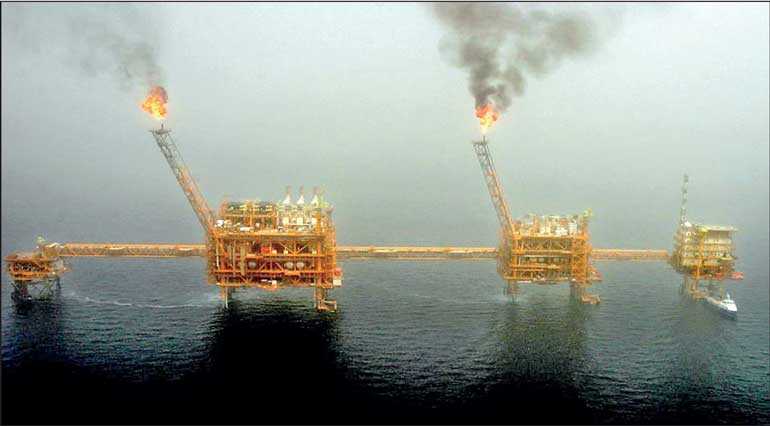Tuesday Dec 02, 2025
Tuesday Dec 02, 2025
Wednesday, 5 June 2019 00:00 - - {{hitsCtrl.values.hits}}

SINGAPORE (Reuters): Oil prices fell on Tuesday as an economic slowdown starts to dent energy demand, but markets won some support after Saudi Arabia said a consensus was emerging with other producers about extending supply cuts.
Front-month Brent crude futures were at $60.97 at 0648 GMT. That was 31 cents, or 0.5%, below last session’s close.
US West Texas Intermediate (WTI) crude futures were at $53.05 per barrel, down 20 cents, or 0.4%, from their last settlement.
Oil futures are around 20% below 2019 peaks reached in late April, with May posting the sharpest monthly declines since November.
Other energy prices, like coal and gas, are also being hit hard by the downturn. That has come as financial traders sell out of energy markets amid growing concerns about the outlook for the world economy amid the trade war between the United States and China.
“The prolonged trade war has sparked fears of a global economic slowdown as well as weaker oil demand,” tanker brokerage Eastport said on Tuesday. To prevent oversupply and prop up the market, the Middle East dominated producer club of the Organization of the Petroleum Exporting Countries (OPEC), together with some allies including Russia, has been withholding supply since the start of the year to prop up the market.
The group plans to decide later this month or in early July whether to continue withholding supply. Saudi Energy Minister Khalid al-Falih said on Monday that a consensus was emerging among producers to continue working “to sustain market stability” in the second-half of the year. Producers are concerned that the economic slowdown will reduce fuel consumption.
“Slowing economic activity now threatens to derail our base case of robust cyclical (oil) demand growth,” Bank of America Merrill Lynch said in a note.
South Korea’s economy shrank by 0.4% in the first quarter while core inflation slowed to a near 20-year low in May, data showed on Tuesday, pointing to a further economic slowdown in Asia.
“The continued escalation in trade tensions and broad-based fall in manufacturing ... suggest that the downside risks to growth are becoming more prominent,” US bank Morgan Stanley said. Further pressuring oil prices and undermining OPEC’s efforts to tighten the market has been surging US output, which has made America the world’s biggest crude producer, at 12.3 million barrels per day (bpd) at the end of May, versus 11.11 million bpd produced in Russia and 9.65 million bpd pumped out of the ground in Saudi Arabia.
With US production surging, more of its oil is being exported, with a record of six super-tankers scheduled for loading at the Louisiana Offshore Oil Port (LOOP) between late May and early June.